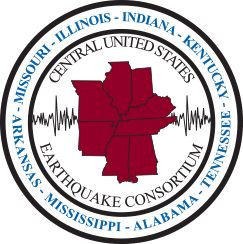Below are some frequently asked questions about earthquakes and the seismic hazard in the central U.S. If you have questions not answered below, please send them to cusec@cusec.org and we will answer as soon as possible.
Frequently Asked Questions about Earthquakes
Frequently Asked Questions about Earthquakes in the Central United States
Frequently Asked Questions about the 1811-1812 New Madrid Earthquakes
1A. What is the difference between Moment Magnitude and Richter Magnitude?
Different magnitude scales were developed to take into account different types of available data (e.g., recordings from different types of instruments and seismic wave types most pronounced at different distances). Although it technically has a very specific meaning, “Richter magnitude” generally is used incorrectly by the press to mean a generic “magnitude”. “Moment magnitude” best reflects the earthquake’s physical characteristics (like the area of fault surface that broke and amount of movement that occurred across it) The USGS has now decided to use only moment magnitude, but just says “magnitude” when reporting to the press and public.
1B. When will the next big earthquake occur?
No one can “predict” earthquakes. Scientists can only estimate the likelihood, or probability, of earthquake occurrence and thus, it is impossible to say that an earthquake will or will not occur at any particular instance of time. For example, if there’s a 25% chance of an earthquake occurring, this also means that there’s a 75% chance of it not occurring. It is also important to keep in mind that these estimates will change as scientists learn more about the earthquake hazard in the central U.S.
1C. What is liquefaction and where does it occur?
1D. What has been learned from recent earthquakes and the damage that occurred in earthquake designed bridges and buildings?
